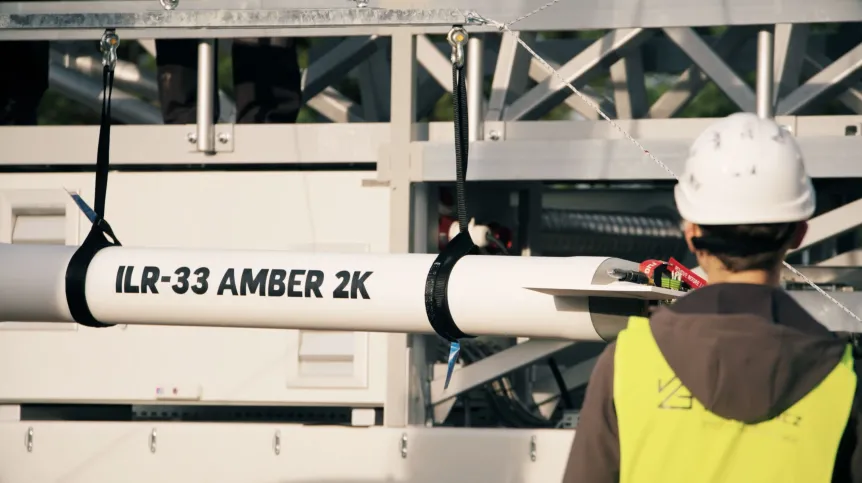
A suborbital flight of the ILR-33 AMBER 2K rocket built at the Łukasiewicz - Institute of Aviation is scheduled to take place in Norway in July. The test is supported by the Polish Space Agency (POLSA), which co-finances the project.
This is the next stage of research and development work preparing Polish suborbital rockets for flights in space environment. The test are to be carried out this July in Norway, POLSA reports.
'AMBER is the first rocket in the world to use hydrogen peroxide with a concentration of 98% as an oxidizer, one of the most ecological propellants. With this project and the technologies used in it, we want to prove to the world that sustainable, ecological transport is possible in space', says Dr. Paweł Stężycki, director of the Łukasiewicz - Institute of Aviation.
ILR-33 AMBER 2K is equipped with an innovative hybrid rocket motor and solid propulsion, as well as a number of modern technologies that can be used in other rocket systems. These include the OBC-K1 modular on-board computer, EGG1U pyrotechnic cartridges, pyrotechnic valves and the WR-2 mobile autonomous launcher.
All design work was carried out at the Łukasiewicz - Institute of Aviation.
The test scheduled for July is a breakthrough moment, say experts from the Institute. The rocket is to fly in the same configuration as the one used in regular suborbital flights. This is also an important moment for domestic space technology.
'Flight tests of the ILR-33 AMBER 2K rocket developed by Łukasiewicz - Institute of Aviation are of particular importance for the development of rocket technologies in Poland. The Polish Space Agency supports the institute's activities in this area. The competences and experience of Polish engineers in space transportation systems design are now the starting point enabling not only participation in large space rocket development programs but also involvement in the implementation of projects for the needs of the Polish Armed Forces', says Dr Michał Wierciński, vice president of Polish Space Agency.
According to POLSA, the solutions developed under the AMBER programme have already enabled the involvement of Polish consortiums in a number of international rocket projects of the European Space Agency, the European Defence Agency and the European Defence Fund.
'The system comprising the ILR-33 AMBER 2K rocket is of particular importance for the development of rocket technologies in Poland. The planned tests in space environment are an important element of building Polish engineering competences and the development of Polish space technologies. Especially since the ILR-33 AMBER 2K is also a key milestone for the development of advanced technologies for orbital launch vehicles, which are currently only available in a few countries in Europe', says Dr. Stężycki.
The rocket will be tested in Norway due to the specific mission requirements. The country has a space centre for launching space vehicles.
'The test campaign is done at a foreign test range because the impact zone of the rocket stages and systems is large and for safety reasons we carry out tests at a location dedicated for suborbital launches. This is also a further test of our cooperation with international partners. It is extremely important because currently the majority of R&D work on launch vehicle technology in Europe is carried out internationally', says Dr. Adam Okniński, director of Space Technology Centre at Łukasiewicz - Institute of Aviation.
The rocket, moving at a speed of nearly 1.4 km/s, has many applications. It can be used to conduct atmospheric research and carry out scientific experiments to further the development of science, new technologies and industry.
'We are optimistic about the next tests of the AMBER system. It is already known that the rocket will be used in 2025-2027 by the Polish company Thorium Space. This will take place as part of the project 'Satellite remote sensing and communication system for suborbital research rockets – PHASE II' (financed by the National Centre for Research and Development) which aims to develop the company's new technological products for the space sector', says Dr. Sylwester Wyka, deputy director for research at Łukasiewicz - Institute of Aviation.
mat/ agt/ kap/













